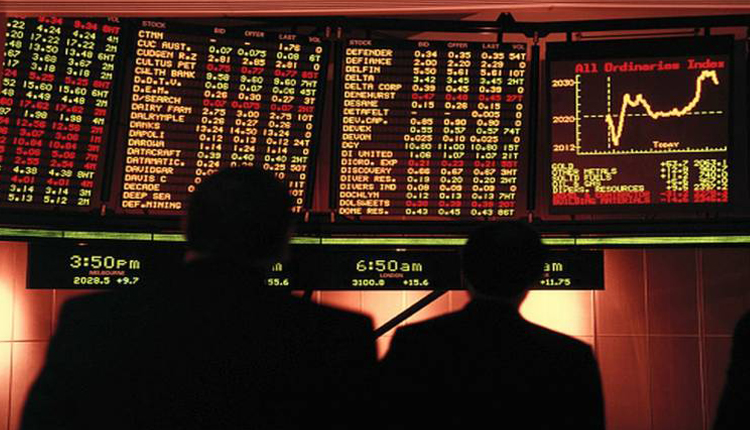Asian markets rose in Monday afternoon trade after U.S. President Donald Trump and Chinese President Xi Jinping agreed to hold off on slapping additional tariffs in an effort to resume trade talks.
Mainland Chinese shares surged by the morning session’s end. The Shanghai composite added 1.88%, while the Shenzhen component soared 3.23%. The Shenzhen composite also added 2.93%. The CSI 300 index, which tracks the largest stocks on the mainland, added 2.47%.
Hong Kong’s Hang Seng index, on the other hand, slipped 0.28% amid protests in the city on the anniversary of its return to Chinese rule.
In Japan, the Nikkei 225 jumped 1.96% during afternoon trade, with shares of index heavyweight and robot-maker Fanuc soaring about 3%. The Topix index also gained 1.8%.
South Korea’s Kospi shed earlier gains to trade near flat as shares of industry heavyweight Samsung Electronics fell 0.96%. Australia’s S&P/ASX 200 rose 0.41%.
U.S. stock futures also pointed to sharp gains on Wall Street at Monday’s open.
The moves came after Trump and Xi emerged from a meeting on the sidelines of the Group of 20 summit in Osaka, Japan. Both sides confirmed in separate comments that they did not plan to levy any new tariffs against each other’s products at the present time.
Still, analysts said the decision is unlikely to spur business decisions.
“Although a worst case outcome has been averted, the threat of tariffs remains and it is unlikely the truce gives much confidence to firms’ investment and hiring decisions,” Tapas Strickland, an economist at National Australia Bank, wrote in a note.
“It is likely that soft manufacturing conditions will persist until if and when a fuller agreement is fleshed out,” Strickland said.
Over at Citi, analysts said in a note: “We expect the current truce to last through the end of the year, with 2020 potentially being a ‘Deal-maker’ year.”
In the event that negotiations “fail,” however, 10% tariffs on the $300 billion of Chinese imports “would be almost ready to go,” they said.
On the subject of Huawei, Trump suggested that he will be reversing his government’s decision to ban American companies from selling products to the Chinese telecommunications behemoth. Previously, Washington had described the tech giant as a security risk to the U.S. and its allies.
Still, Trump said the issue of Huawei will be resolved only at the conclusion of the negotiations.
Following Trump’s comments, White House economic advisor Larry Kudlow told Fox News Sunday that the decision to let Huawei buy U.S. products is “not a general amnesty. ”
“I think it’s going to be very interesting to see how Huawei plays out,” Rob Subbaraman, head of global macro research at Nomura, told CNBC’s “Squawk Box” on Monday.
“What happens in terms of these … ‘structural issues’, technology transfer, (intellectual property rights) … state subsidies, whether China starts to … in Trump’s words, ‘level the playing field,’ I think is going to be very important,” Subbaraman said.
Data released Monday from a private survey showed that Chinese factory activity in June shrank unexpectedly.
The Caixin/Markit factory Purchasing Managers’ Index (PMI) for June was 49.4. Analysts polled by Reuters had expected the indicator to come in at 50. A PMI reading above 50 indicates expansion while those below that figure signal contraction.
That followed a Sunday official data release that showed Chinese manufacturing activity shrinking more than expected in June.
The Purchasing Managers’ Index stood at 49.4 in June, according to China’s National Bureau of Statistics on Sunday. That was unchanged from the previous month and below expectations of 49.5 by analysts in a Reuters poll.
The U.S. dollar index, which tracks the greenback against a basket of its peers, was at 96.368 after seeing levels below 96.0 last week. The offshore Chinese yuan saw strong gains against the dollar to 6.8360 after tracking above 6.87 for much of the previous trading week, while its onshore counterpart was at 6.8373.
The Japanese yen, viewed as a safe-haven currency, weakened to 108.27 against the dollar after trading below 107.0 last week. The Australian dollar changed hands at $0.7003 following its rise from below $0.696 in the previous trading week.
Oil prices jumped Monday afternoon during Asian trading hours, with international benchmark Brent crude futures surging 2.49% to $66.35 per barrel. U.S. crude futures gained 2.36% to $59.85 per barrel.
Source: CNBC


